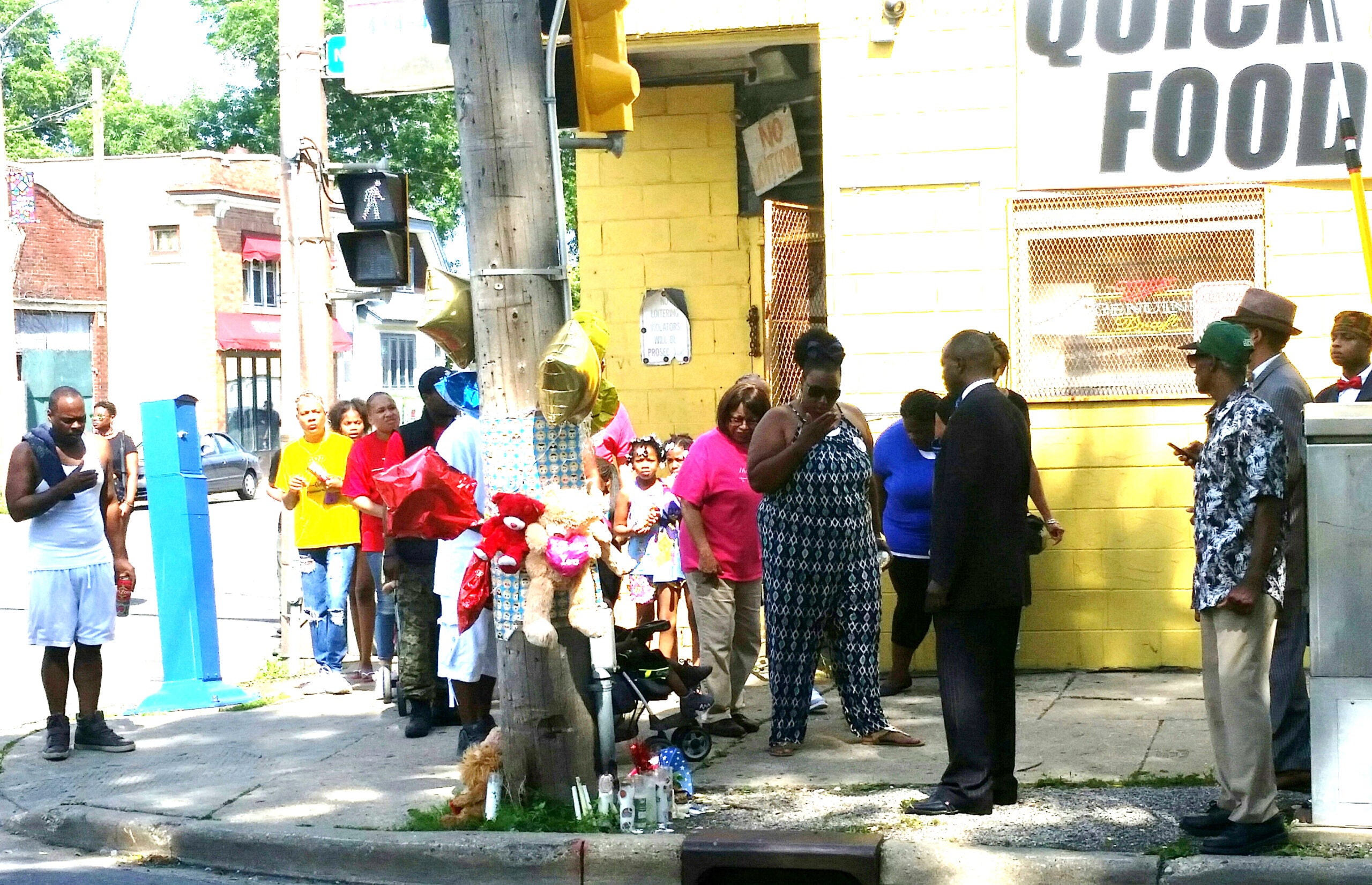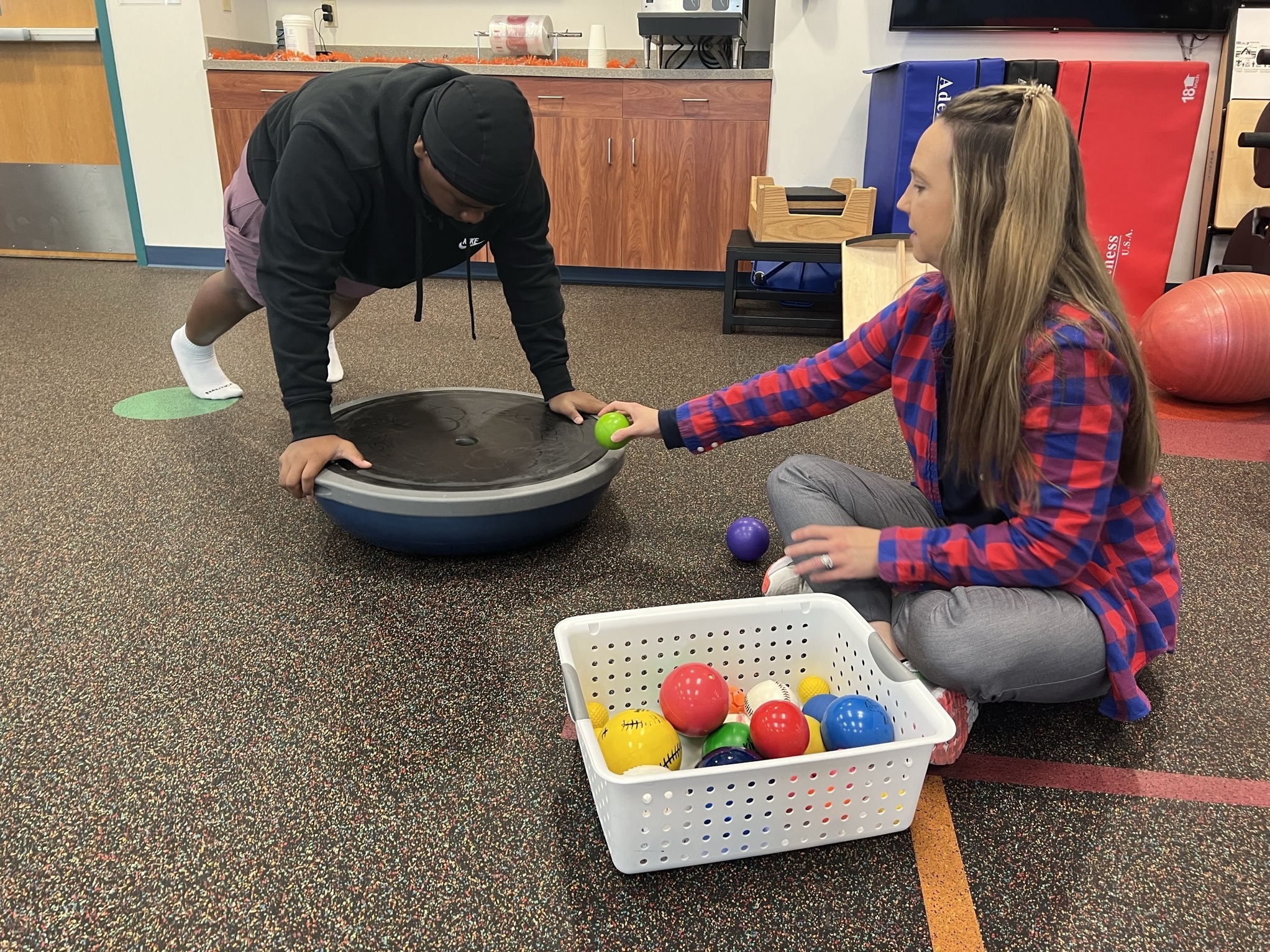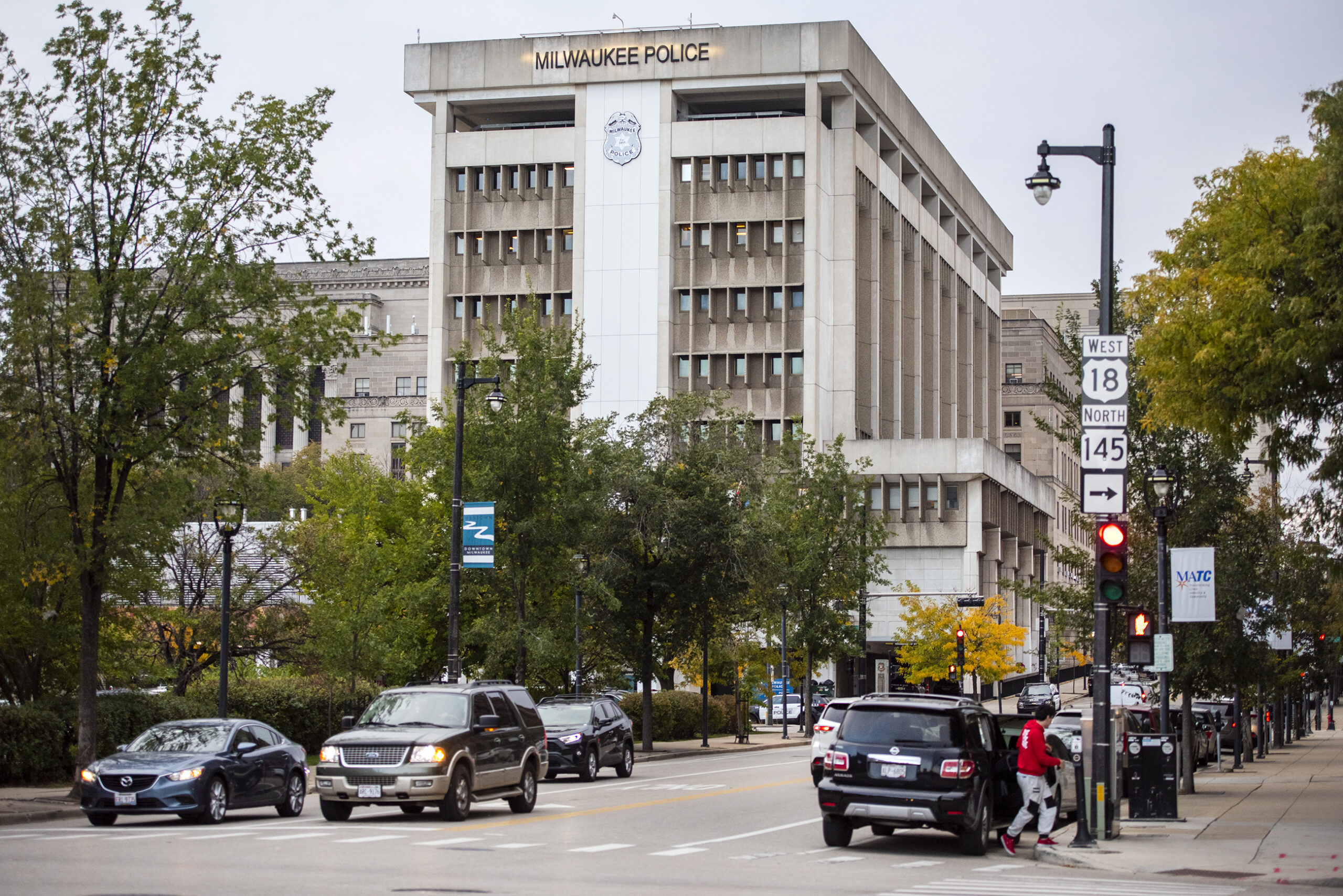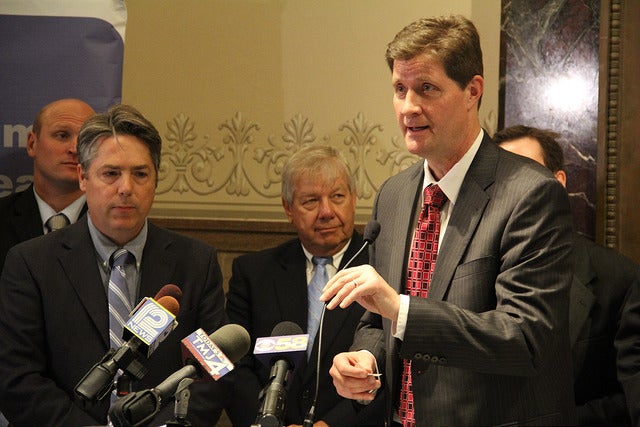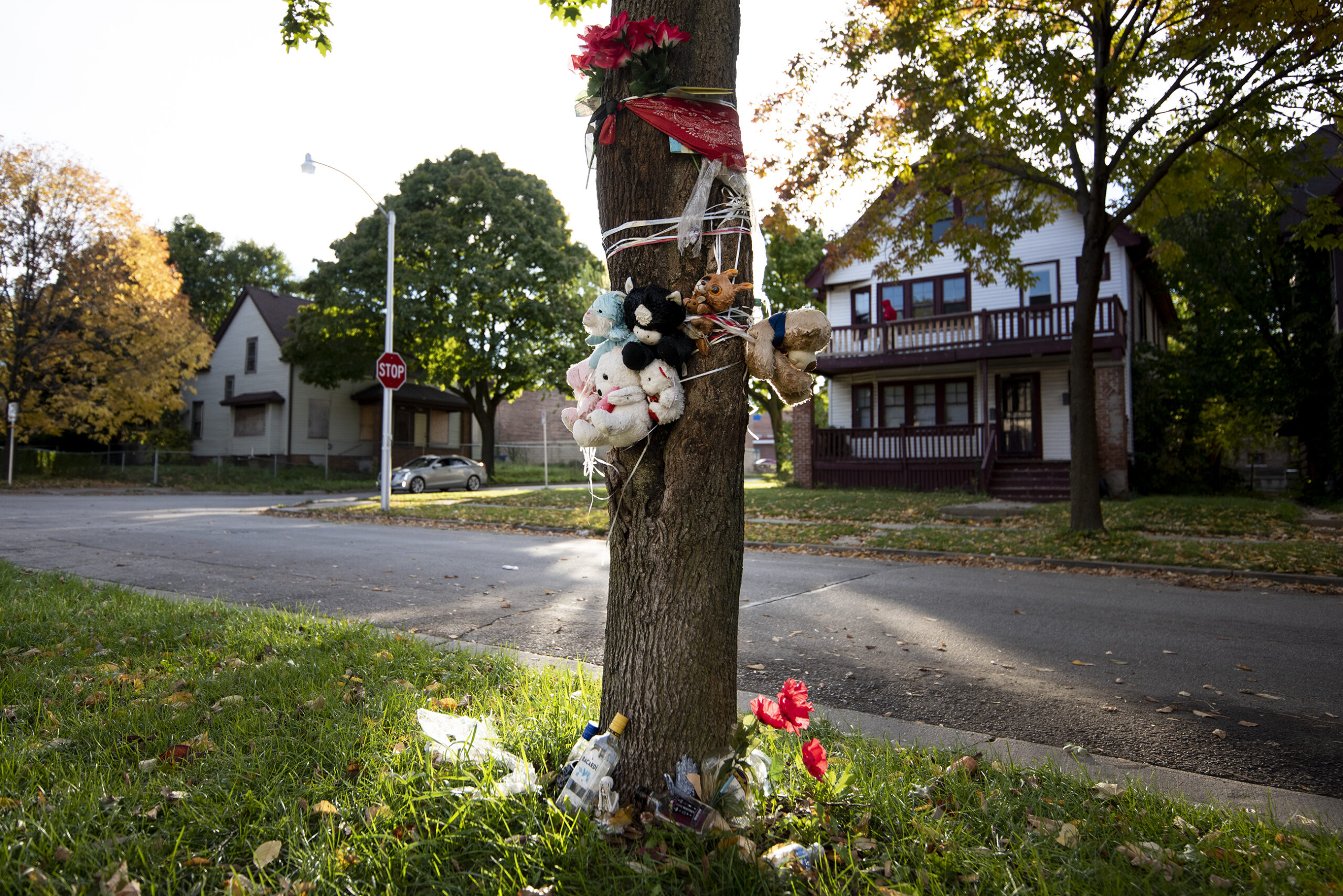On Sunday, June 25 Emani Robinson was walking to a corner store at 39th and Center streets in Milwaukee when his family says he was caught in crossfire and hit by a bullet.
The 16 year-old died the next day. His murder investigation remains open while the Milwaukee Police Department searches for two men believed to be involved in the incident.
At a neighborhood gathering about two weeks after the shooting, Robinson’s mother, Latasha Davis, urged witnesses to come forward.
Stay informed on the latest news
Sign up for WPR’s email newsletter.
“If anybody knows anything, just please come forward and tell MPD. You don’t have to tell me, don’t have to post entries on Facebook. The police should be the first ones to know,” Davis said at a family gathering.
MPD said last week that it has arrested one of three people who allegedly fired guns outside the store. Davis has urged all the shooters to step up. “Turn yourself in. That’s your best bet,” Davis said. “Get whatever you’ve got coming. Get it over with. Lord have mercy. You took away someone’s life. My son’s life.”
The gathering’s message, including on a boom box, was strongly anti-violence. A female in one song sang the lyrics: “Violence will only make us weaker. Stop. The violence will disable her.”

Supporters of Emani Robinson’s family march past the street corner where Robinson was shot Sunday, June 25. Chuck Quirmbach/WPR
Neighborhood resident Farina Brooks helped organize the gathering honoring Emani and said living in an area where shootings are more common than not is difficult, especially when some go unsolved and remain a mystery.
“You know, I’ve been here in that same house since like 1990. I’ve seen the community go up and down, and bad and worse, and you know, it’s like, OK, I’m tired,” Brooks said.
One of the challenges of reducing gun violence in Milwaukee is that many of the shooters get away with it.
Milwaukee Police say the city is above the national average in the homicide clearance rate.
A case is said to be cleared after an arrest is made or when a suspect has been identified and an arrest is not possible. For example, the suspect may have died. After an arrest, the case is then presented to a prosecutor for possible charges. Under FBI guidelines, clearance rates include all homicide arrests in a given year.
But even by exceeding a national average of around 60 percent, at least one-fifth of the killings in Milwaukee are unsolved in 2017, and about two-thirds of non-fatal shootings remain unsolved in 2017, said Milwaukee County District Attorney John Chisholm said.
“There’s never an acceptable clearance rate short of 100 percent, right?” he said.
Chisholm said his office is trying to hold people who commit gun violence accountable. But in some cases, especially non-fatal shootings, some victims and witnesses may not want to cooperate, he said.
People are frequently scared, dislike police or are planning to take revenge against the shooter, Chisholm said. The veteran prosecutor also said getting a conviction in a murder trial, which is not included in the calculated clearance rate, can be difficult.
But Chisholm said more efforts to prevent violent crime could help police and prosecutors deal with the remaining, unsolved cases. Chisholm has used federal dollars to put staff in neighborhoods to head off violence. But he said proposed federal budget cuts would weaken prevention.
“If you take all those resources away, everybody is essentially just chasing their tail all the time,” Chisholm said. “The police are just going from what they call one hitch to the next hitch to the next hitch. The prosecutors are just doing an assembly line of cases, because they have no other choice.”
There have been 56 homicides caused by gunfire in Milwaukee so far this year, according to the Milwaukee Journal Sentinel database that tracks the statistic and does year-by-year comparisons.
A longtime observer of the criminal justice system agrees prevention is key.
Stan Stojkovic, dean of the Helen Bader School of Social Welfare at the University of Wisconsin-Milwaukee, argues the clearance rate is just a measure of police activity. If people want to focus on outcomes like less crime and fewer people being hit by gunfire, it will take community investment and political will, he said.
“What do the schools look like, what do the families look like, what’s the employment looking like? The places of worship, what’s going on with them? That’s a better measure than waiting for criminal justice, which tends to be very reactive, after someone is shot,” Stojkovic said.
The outcome of budget debates in Washington and Madison may help dictate how much money Milwaukee has to spend on violence reduction and possibly affect the amount of gunfire.
Meanwhile, community activists like Vaun Mayes in Milwaukee are urging gun violence witnesses to speak to them if there’s concern about talking to police.
“We live here, and we are from here, they may be comfortable telling us things,” Mayes said. “And again, be proactive in stopping this kind of thing from happening.”
Editor’s Note: This story is part of a three-part series on gun violence in Milwaukee.
Wisconsin Public Radio, © Copyright 2024, Board of Regents of the University of Wisconsin System and Wisconsin Educational Communications Board.

